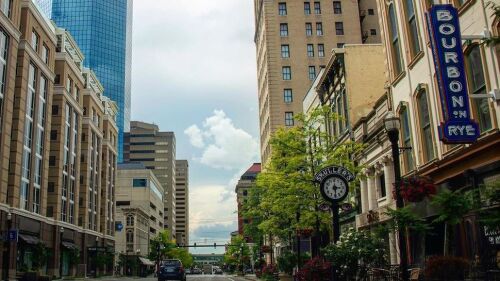Earlier this week, we debuted a new series where we break down the city’s newly adopted comprehensive plan, Imagine Lexington 2045.
The 349-page plan ensures long-range planning + urban growth to address the needs and contributes to the prosperity of all Lexingtonians.
Lexington-Fayette Urban County Government’s (LFUCG) Division of Planning has laid out five themes. Catch up by reading part one of the series, building + sustaining successful neighborhoods. Let’s begin today’s lesson: protecting the environment.
The key objective is to prioritize efforts that reduce greenhouse gas emissions and minimize impacts on the environment due to development. This includes:
- Protect water sources through improved infrastructure
- Community-wide net zero greenhouse gas emissions by 2050
- Conserve and restore landscapes + natural resources through environmentally sustainable practices.
Imagine Lexington identified three pillars to help facilitate these goals, which aim to create a healthier and more sustainable community.
Protection
The policies will encourage neighborhood associations + commercial entities to utilize the Stormwater Quality Projects Incentive Grant Program to help improve water quality and reduce runoff. It also calls for an update to land development, regulations to preserve greenways, wetlands, and sensitive natural habitats. Other key focus areas of protection include —
- Rural land, active agricultural land, and farms
- Urban forests and tree canopies
- Soil preservation
- Reducing light pollution
Sustainability
LFUCG plans to tackle air pollution + greenhouse gas emissions through a number initiatives, including exploring federal funding opportunities for climate solutions, creating community-wide emissions plans, enhancing recycling + waste management programs, and improving transportation options through the complete streets and neighborhood programs.
Restoration
This pillar will focus on repairing + rehabilitating resources and damaged ecosystems. High-level policies include growing the city’s urban forest, strategically linking parks + greenways to advance our “green infrastructure network,” and supporting urban agriculture and community gardens.












